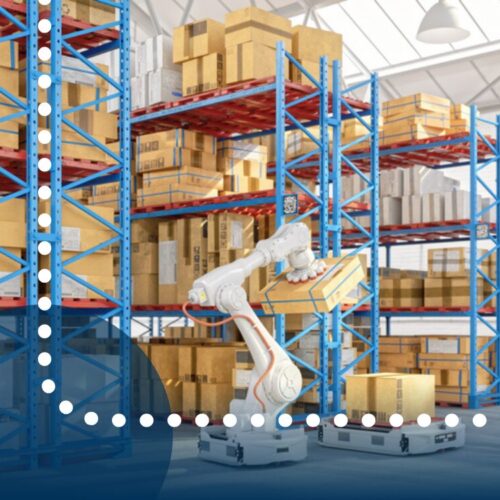
More than ever before, warehousing operations are under pressure to trim costs while increasing speed. Thankfully, new and essential high-tech solutions, such as material handling systems, can help distribution and fulfillment centers achieve these goals.
Increasingly, warehouses are taking advantage of sophisticated management systems, and a report from Research and Markets anticipates that the compound annual growth rate of the North American automated material handling equipment market will be more than 8 percent between 2017 and 2021, according to Manufacturing Business Technology.
However, as any procurement manager knows, implementation is half the battle when it comes to successfully deploying new high-tech applications and equipment in a way that drives savings while increasing efficiency.
As the sourcing leader for your warehouse operation, what do you need to know about implementation to ensure that your organization will derive the maximum amount of value possible from new material handling systems as well as other technology and machinery? Read on to learn the four keys you need to know.
1. Put People First
No matter how much of your material handling system is automated, there will always be an operator or user of the technology involved in the process. The way you implement new technology must take into account the experiences of that user or operator.
When you’re planning to implement new technology, it’s a good idea to assign a leader to represent the operator’s perspective. This team member can document how users currently interact with the workspace, and they can audit human interactions with the technology to determine any next steps, like process changes or new training needs.
Implementing Warehouse Tech
Are you considering rolling out automated guided vehicles (AGVs) in your warehouses? If you are, and if your operation also requires manually operated forklifts, you’ll need to ensure that operators know how to share the space with AGVs safely and effectively.
2. Anticipate Speed Bumps
No matter how well you prepare to deploy new technology in your material handling system, issues will arise. Know who on your team will be responsible for fielding problems related to different implementation issues, make sure to conduct performance and safety audits, and solicit feedback from users.
Armed with this information, you should make sure to solve problems proactively along the way and build time for troubleshooting into your implementation schedule. If you’re not properly auditing and correcting for bugs as you implement, problems will only intensify, which will cut into the savings and productivity gains you hoped to achieve.
Implementing Warehouse Tech
Voice picking technology can help you increase productivity, especially in fulfillment environments, but there will be an adjustment period. Bear in mind that you’ll not only have to limit background noise so your workers’ headsets can adequately register their users’ speech, but you’ll also have to program the system to understand the particular dialects and unique voices of your workforce.
3. Build It Up
Start small, and build your implementation efforts up. If you implement technology on one line before deploying it throughout an entire warehouse, you’ll be able to fix small errors instead of big problems. Once you improve your use of the technology, you’ll also be able to benchmark the improvements you can expect from a wider rollout.
There are a couple ways you can try out this strategy for material handling technology. As mentioned above, you can start on one line, then move up to a whole facility, and then deploy it across multiple locations. If your goal is to automate several functions in your material handling system, you can start by trying to automate the simplest process for which technology is available and then roll out solutions that are more complicated.
Implementing Warehouse Tech
If you’re considering automation technology for multiple aspects of your fulfillment operation, you might want to start with something relatively simple, like an automated document insertion system. This kind of system prints shipping labels and inserts them into packages.
If you begin with this one piece of automation technology, you can use the experience to create processes for monitoring the effectiveness of new technology and troubleshooting tech issues. Your document insertion rollout can serve as a blueprint for future tech implementations.
4. Systemize Your Processes
Systemized processes are the cornerstone of successful implementation. With systemized processes, you’ll be able to scale from one stage to the next with ease. All your established protocols should incorporate the experience of operators. These standardized procedures should also include built-in strategies for troubleshooting problems and fixing issues as they emerge. In your procedures, remember to also include goals and performance standards that need to be achieved before you scale up.
Implementing Warehouse Tech
When you scale from one level to the next, make sure your staffing partner shares your commitment to a systemized expansion of material handling technologies. It can help to work with an onsite staffing partner. The onsite partner’s management personnel can teach contingent workers how to use new technology. If you’re really trying to drive results with new machinery or programs, the hands-off approach of other staffing models might not cut it.
As a procurement professional, you know you must balance the upfront costs of new technology with the potential savings and the expected benefits provided by that technology. Without a strong implementation plan, that equation can be thrown off balance pretty quickly.
If you’re considering new material handling technology, make sure your implementation strategy puts your users first and incorporates opportunities to troubleshoot issues as they emerge. You should be able to solve problems at an early stage and then roll the technology out more widely. Everything you do should be systemized and reliable.
Several of these rules can be applied to the implementation of a new contingent workforce strategy as well. At Staff Management | SMX, we began our relationship with one of our warehousing clients in a smaller capacity, then we expanded our operation to several more sites of theirs across the country.
Find out how we did it, and discover the benefits this expansion afforded our client.



